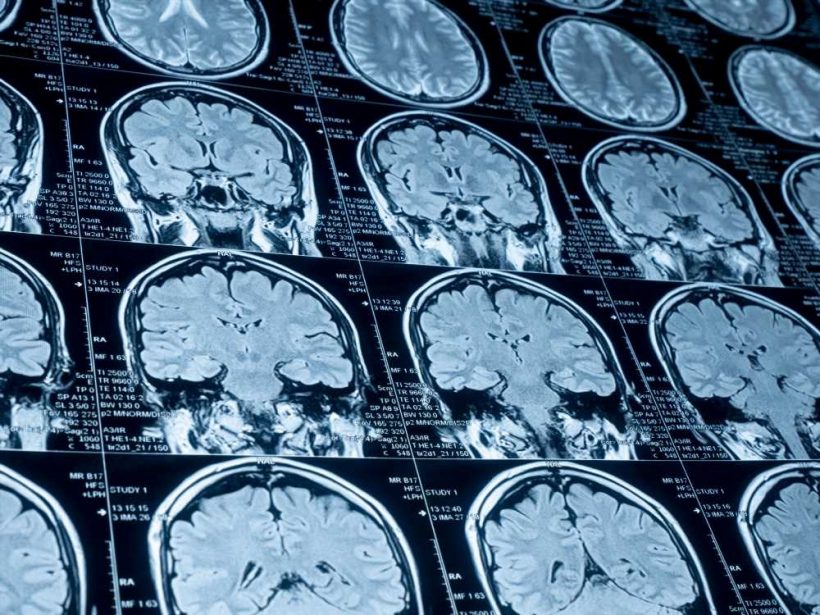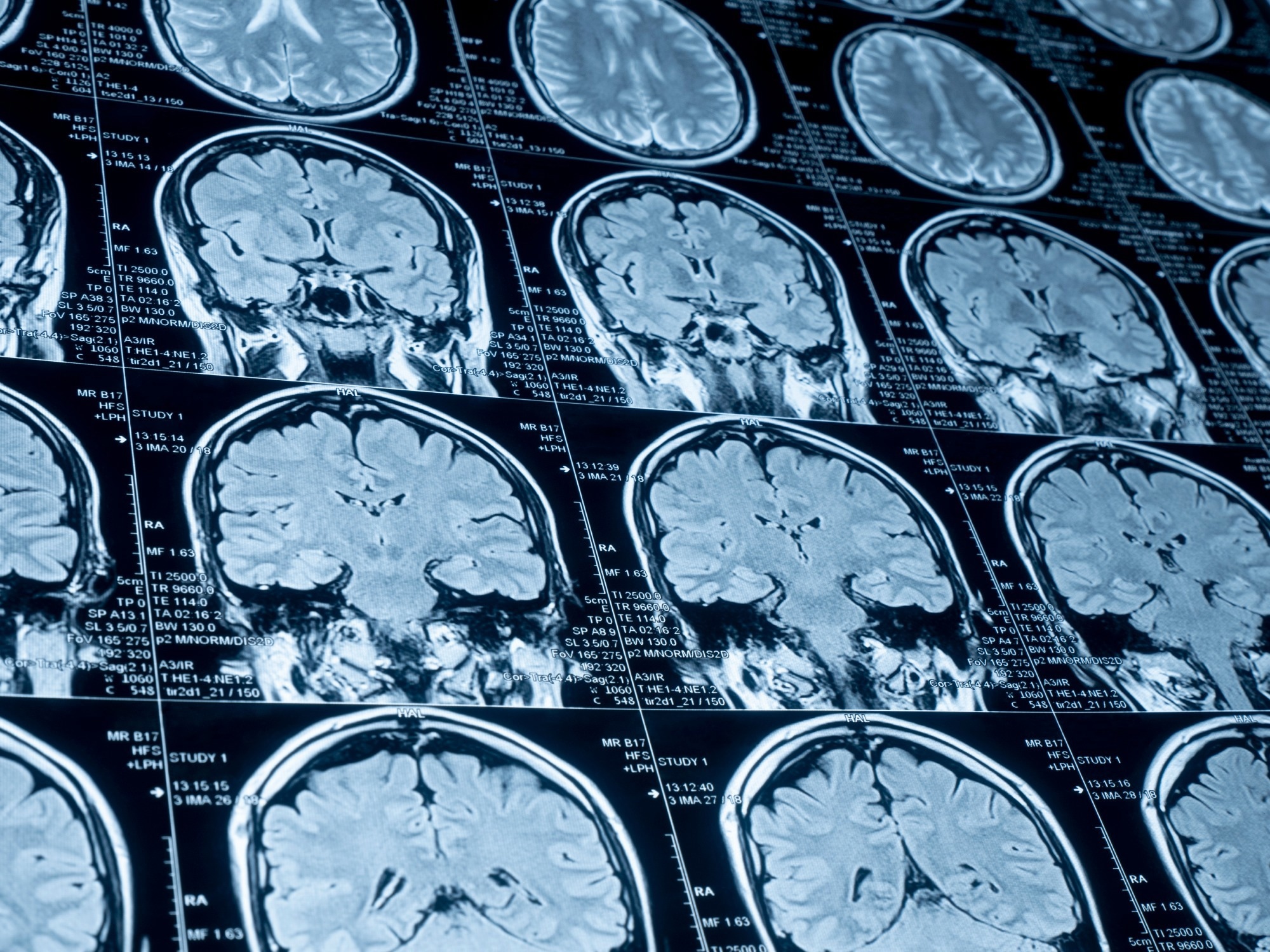
Omicron infection linked to brain structure changes in men, study finds
In a recent study published in the journal JAMA Network Open, researchers investigate clinical symptoms and brain structural changes that occur during the acute phase of severe acute respiratory syndrome coronavirus 2 (SARS-CoV-2) Omicron infection.
 Study: Gray Matter Thickness and Subcortical Nuclear Volume in Men After SARS-CoV-2 Omicron Infection. Image Credit: ALEXSTAND / Shutterstock.com
Study: Gray Matter Thickness and Subcortical Nuclear Volume in Men After SARS-CoV-2 Omicron Infection. Image Credit: ALEXSTAND / Shutterstock.com
Background
Previous studies have shown that similar to SARS-CoV-2 Delta infections, Omicron infection leads to multiple systemic symptoms, including neurological sequelae. Neurological sequelae associated with the coronavirus disease 2019 (COVID-19) consist of clinical and neuropsychiatric symptoms such as dizziness, motor delay, depression, anxiety, and reduced cognitive function, as well as structural and functional brain changes.
To date, there remains a lack of research on individuals with mild neurological symptoms in the acute Omicron infection phase, particularly on the brain microstructural damage that may arise following infection.
About the study
Initially, 207 men underwent magnetic resonance imaging (MRI) screening between August 28, 2022, and September 18, 2022; however, imaging and neuropsychiatric data for only 98 individuals were available. After three months, the researchers then reevaluated all 61 participants to collect their neuropsychiatric and MRI data and clinical symptoms.
The inclusion criteria mandated that all participants presented a positive nucleic acid test (NAT) result after being diagnosed with SARS-CoV-2 infection in December 2022. At enrollment, the study participants did not have MRI contraindications or a history of brain abnormalities or tumor or endocrine diseases.
The study participants were categorized into pre- and post-Omicron groups and febrile and nonfebrile groups for study assessments, including brain structural changes. A three-dimensional (3D) magnetization-prepared rapid acquisition gradient echo was used to generate gray matter indexes and subcutaneous nuclear volume and present gray matter indexes in a violin plot. After MRI examinations, additional tests were administered to assess emotional regulation and cognitive abilities.
The MRI scanning sequences included T1- and T2-weighted imaging, fluid-attenuated inversion recovery imaging, and 3D-MPRAGE. Image quality, motion correction, segmentation, registration, and calculation of various brain measurements were performed using FreeSurfer software.
Pearson or Spearman correlation analyses were based on variable distribution for comparisons. The false discovery rate (FDR) corrected all correlation analysis results for multiple comparisons.
Study findings
The current study comprised 61 male participants with a median age of 43.1 years. The time interval between Omicron infection and MRI scans was 21.6 days. Following infection, Beck Anxiety Inventory (BAI) scores increased while depressive distress scores (DES) significantly decreased.
On neurocognitive test scales, the effect of age and history of nicotine use was significant in both febrile and nonfebrile groups but not any other characteristics.
Follow-up results showed varying effects on neurological, respiratory, and digestive symptoms. Respiratory symptoms like cough and dyspnea had moderate incidence for extended durations, while decreased appetite had a high incidence for prolonged duration.
Fever and slowed reaction speed had high incidences for short and long durations, respectively. However, significant improvements were observed for fever, myalgia, and cough at a three-month follow-up.
A marked reduction in thicknesses of the left precuneus and right lateral occipital region, as well as a reduced ratio of right hippocampus volume to total intracranial volume (TIV), were observed during the post-Omicron follow-up as compared with pre-Omicron measurements. Moreover, the febrile group exhibited reduced sulcus depth in the right inferior parietal region compared to the nonfebrile group.
Correlation analyses revealed a negative correlation between thickness in the left precuneus and BAI scores. In contrast, a positive correlation was observed between the ratio of right hippocampus volume to TIV and WFT scores.
Conclusions
Overall, the duration of symptoms in multiple systems after Omicron infection was short; however, the results showed changes in gray matter thickness and subcortical nuclear volume.
These findings elucidate the emotional and cognitive mechanisms of Omicron invasion and its association with changes to the nervous system. Unlike Delta, which enters the nervous system through the olfactory nerve and reduces gray matter volume in the connected brain regions, Omicron enters the nervous system through the terminal nerve pathway, expressing angiotensin-converting enzyme 2 (ACE2).
The current study presents a neuroimaging foundation for early diagnosis and intervention to prevent neurological sequelae of COVID-19.
- Du, Y., Zhao, W., Huang, S., et al. (2023). Gray Matter Thickness and Subcortical Nuclear Volume in Men After SARS-CoV-2 Omicron Infection. JAMA Network Open 6(11). doi:10.1001/jamanetworkopen.2023.45626
Posted in: Men's Health News | Medical Science News | Medical Research News | Disease/Infection News
Tags: ACE2, Angiotensin, Angiotensin-Converting Enzyme 2, Anxiety, Brain, Cognitive Function, Coronavirus, Coronavirus Disease COVID-19, Cough, Depression, Dyspnea, Endocrine, Enzyme, Fever, Hippocampus, Imaging, Magnetic Resonance Imaging, Nerve, Nervous System, Neuroimaging, Nicotine, Nucleic Acid, Omicron, Research, Respiratory, SARS, SARS-CoV-2, Severe Acute Respiratory, Severe Acute Respiratory Syndrome, Software, Syndrome, Tumor

Written by
Neha Mathur
Neha is a digital marketing professional based in Gurugram, India. She has a Master’s degree from the University of Rajasthan with a specialization in Biotechnology in 2008. She has experience in pre-clinical research as part of her research project in The Department of Toxicology at the prestigious Central Drug Research Institute (CDRI), Lucknow, India. She also holds a certification in C++ programming.





